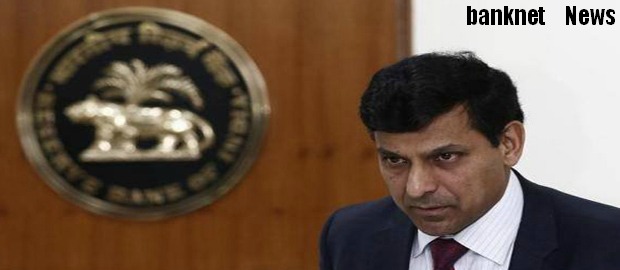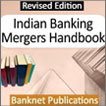

First Bi-monthly Monetary Policy Statement for 2015-16 By Dr. Raghuram G. Rajan, Governor, RBI - April 07, 2015 - Full Text
Banking Structure
The Basel Committee on Banking Supervision issued the final rules on the Net Stable Funding Ratio (NSFR) in October 2014. The Reserve Bank has already started phasing in implementation of the Liquidity Coverage Ratio (LCR) from January 2015 and is committed to the scheduled implementation of NSFR from January 1, 2018 for banks in India. The Reserve Bank proposes to issue draft guidelines on NSFR by May 15, 2015.
Guidelines on Countercyclical Capital Buffers (CCCB) were issued on February 5, 2015. They advised that the CCCB would be activated as and when circumstances warrant, and that the decision would normally be pre-announced with a lead time of four quarters. The framework envisages the credit-to-GDP gap as the main indicator which may be used in conjunction with other supplementary indicators such as the incremental credit-deposit (C-D) ratio for a moving period of three years, the industrial outlook survey (IOS) assessment index and the interest coverage ratio. A review and empirical testing of these indicators was carried out to assess whether activation of the CCCB is warranted. It was concluded that the overall situation does not warrant imposition of CCCB at this point of time.
In July 2014, banks were allowed to issue long term bonds (LTBs), with exemptions from certain regulatory pre-emptions, for lending to (i) long-term projects in infrastructure sub-sectors, and (ii) affordable housing. However, cross-holding of such bonds amongst banks is currently not permitted. On a review, it has been decided to allow banks to invest in such bonds issued by other banks, subject to the following conditions:
banks’ investment in these bonds will not be treated as ‘assets with the banking system in India’ for the purpose of calculation of NDTL; and
any single bank’s holding of bonds in a particular issue will be subject to certain limits in relation to the bond issue size. Its aggregate holding of such bonds will also be subject to certain limits in relation to its own assets.
LTBs held for trading will reduce the bank’s priority sector and liquidity benefits obtained from its own issuance of LTBs.
Detailed guidelines in this regard will be issued shortly.
For monetary transmission to occur, lending rates have to be sensitive to the policy rate. With the introduction of the Base Rate on July 1, 2010 banks could set their actual lending rates on loans and advances with reference to the Base Rate. At present, banks are following different methodologies in computing their Base Rate – on the basis of average cost of funds, marginal cost of funds or blended cost of funds (liabilities). Base Rates based on marginal cost of funds should be more sensitive to changes in the policy rates. In order to improve the efficiency of monetary policy transmission, the Reserve Bank will encourage banks to move in a time-bound manner to marginal-cost-of-funds-based determination of their Base Rate. Detailed guidelines will be issued shortly.
The Financial Benchmarks India Pvt. Ltd., jointly floated by the Fixed Income Money Market and Derivatives Association of India (FIMMDA), the Foreign Exchange Dealers' Association of India (FEDAI) and the Indian Banks’ Association (IBA), has been established as an independent benchmark administrator. This administrator will start operations by end-May 2015. Once it starts publishing various indices of market interest rates, the Reserve Bank will explore the possibility of encouraging banks to use the indices as an external benchmark for pricing bank products.
The Reserve Bank has been prescribing a comprehensive ‘Calendar of Reviews’ to be deliberated by the boards of banks, with significant additions to the calendar over the years. Time spent on reviews reduces the leeway for the board to discuss issues of strategic importance for banks such as product market strategy and risk management. The Committee to Review Governance of Boards of Banks in India (Chairman: Dr. P.J.Nayak) recommended that discussions in the boards of banks need to be upgraded and greater focus should be on strategic issues. It is, therefore, proposed to do away with the mandatory calendar of reviews and instead, replace it with the seven critical themes prescribed by the Nayak Committee namely, business strategy, financial reports and their integrity, risk, compliance, customer protection, financial inclusion and human resources, and leave it to the banks’ boards to determine other list of items to be deliberated and periodicity thereof.
The need to bring in professionalism to the boards of banks cannot be overemphasized. In order to attract and retain professional directors, it is essential that they are appropriately compensated. Public sector banks follow guidelines issued by the government in this regard. The remuneration of the part-time Chairmen of private sector banks are approved specifically for each bank under the current statutory provisions. However, there is no guidance on remuneration to other non-executive directors of private sector banks. Therefore, it is proposed:
to issue guidelines to private sector banks on a policy on remuneration for the non-executive directors (other than part-time Chairman) that will reflect market realities and will be within the parameters specified in the Banking Regulation Act 1949 and the Companies Act, 2013; and
to discuss with the Government the adoption of a similar remuneration policy for the non-executive directors of the public sector banks.
With a view to enlarging the scope of urban co-operative banks for expanding their business, it has been decided to allow financially sound and well managed (FSWM) scheduled urban co-operative banks, which are CBS-enabled and having minimum net worth of `100 crore, to issue credit cards. Detailed guidelines in this regard will be issued separately.
Similarly, with a view to providing greater freedom to state co-operative banks to expand their business and to provide technology-enabled services to their customers, it has been decided to permit state co-operative banks satisfying certain eligibility criteria to set up off-site ATMs/mobile ATMs without obtaining prior approval from the Reserve Bank. Detailed guidelines in this regard will be issued separately.
Assessment ... Read more
Policy Stance and Rationale ... Read more
Banking Structure... Read more
Financial Markets ... Read more
Access to Finance... Read more
RBI Monetary and Credit Policies (1999-2015) - Notifications, Press Releases, Reports - Click here

BANKING

FINANCE

INSURANCE

TECHNOLOGY

Foreign Exchange


